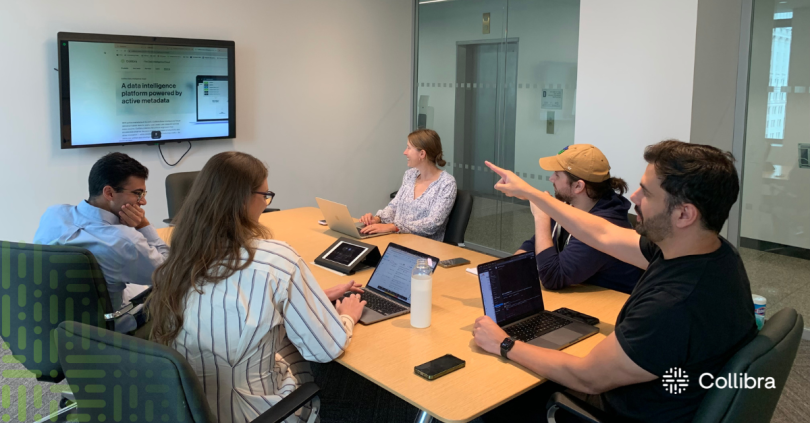“Too many cooks in the kitchen” is the classic phrase used to describe collaboration overload. That said, it’s not completely accurate. Unless the kitchen is too small, the issue is not too many cooks — but rather the lack of specific assignments.
This reframing speaks to the approach Michelle Zyglis of Comcast Advertising, VP of product management for TV platform at FreeWheel, takes toward streamlining collaboration.
“Defining how a team will work together and operate is critical, and holding each other accountable to those agreements is also critical,” Zyglis said.
While assigning and defining roles is crucial to ensuring productivity, Zyglis told Built In NYC that getting teams invested early on in their work is also incredibly important. This is a position shared by Eileen Jones, a staff product manager at enterprise data intelligence company Collibra. In addition to the intangible, Jones said there are practical benefits to having a North Star.
“Not only does this serve as a unifying motivator, it also helps when breaking down work, prioritizing tasks and resolving conflict,” Jones said.
Zyglis and Jones are seasoned product management professionals and both offered Built In NYC their advice on how to keep teams across different departments working together smoothly.
Comcast Advertising helps brands connect with their audiences across TV and streaming platforms.
Describe your approach to collaboration in product management.
Cross-functional collaboration is critical to ensuring that product delivers value to both the business and end clients. Strategic collaboration enables product managers to efficiently gather relevant information and leverage existing business expertise while increasing the speed of delivery and effectiveness of the solutions.
Collaborating with other business functions and experts can significantly benefit product managers. Brainstorming sessions result in both innovation and creative solutions when everyone brings their unique points of view to the table. By involving partners early in the process, you gain alignment on expectations and deliverables.
This also ensures that everyone feels committed to the larger business goal and is dedicated to both success and delivery. As product managers interact with other teams, they quickly learn how to communicate effectively and partner, making ongoing partnerships and dependencies easier to manage.
How can you tell when collaboration is becoming unproductive or inefficient? What are some key signs you look out for?
Without clear rules and expectations for how teams collaborate and operate, the sheer number of collaboration mediums can quickly overwhelm everyone. If you find yourself at the end of the day not making progress on your projects or tasks, it’s likely a sign that you need to restructure your collaboration methods and/or availability.
Ever hear of analysis paralysis or too many chefs? Those phrases describe what happens when we’ve gone down the path of collaboration without clearly defining who the decision makers are, who needs to be actively involved versus who needs to be updated, definitions for success and/or agreeing to specific timelines.
If you find yourself at the end of the day not making progress on your projects or tasks, it’s likely a sign that you need to restructure your collaboration methods and availability.”
What are the best practices you’ve developed for keeping collaboration streamlined without tipping into collaboration overload?
All teams should define their operating rules. Items like assigning decision makers, clearly articulating timelines, assigning meeting facilitators, expecting meeting agendas, defining success and tracking risks and issues go a long way to ensuring collaboration is effective and efficient.
Regular meetings can help teams collaborate more effectively on blockers. At FreeWheel, our product team needs to collaborate with multiple stakeholders around the world to develop new capabilities for our complex enterprise solution. To enable visibility and offline problem solving, add known issues to a shared list or team scrum board for regularly scheduled touchpoints. That said, select tools wisely. Slack is great for virtual real-time conversations but email is better for time-delayed conversations.
Email is great for sharing decisions, status updates and background information, while meetings are great for active conversations and brainstorming but wasteful for status updates. Complex email threads are hard to follow and decisions are lost beyond four replies; opt for a meeting instead with published meeting minutes and decisions.
Enterprise companies use Collibra’s data intelligence platform to simply and streamline data cataloging, governance and protection.
Describe your approach to collaboration in product management.
Cross-team collaboration is essential to much of the work we do at Collibra. A successful project requires subject matter experts with different skills and perspectives, and collaboration ensures that the solution has been considered from all angles. From a practical perspective, we collaborate via formal meetings, ad-hoc calls, shared documents, Slack and project tracking software. This allows all stakeholders to work together on designs, requirements, marketing plans, project schedules and product strategy.
Philosophically, my approach to collaboration is to always concentrate on a shared goal, whether it’s a bug-free release, improved user experience or increased customer value for a specific persona. It’s hard to navigate without a North Star.
Philosophically, my approach to collaboration is to always concentrate on a shared goal.”
How can you tell when collaboration is becoming unproductive or inefficient? What are some key signs you look out for?
Collaboration usually goes poorly when it doesn’t save time or add value. One key sign of this is too much communication without measurable progress toward a goal, such as a long email chain with no resolution or a recurring meeting where the majority of attendees don’t pay attention. Another key sign is when there is minimal conversation around decisions. When no one responds to questions, one party is consistently overridden or meetings consist primarily of updates and brief, uncomplicated discussions, you may need to change how you communicate.
Here are some questions I ask to figure out my next step in these situations: Should this be a synchronous conversation or an asynchronous update? Are the correct people involved? Do we spend our time on the right things?
Rarely, collaboration will become unproductive due to conflict. This can be a symptom of a group that has lost sight of their shared goal. In this case, it is beneficial to remind everyone about their success so far and the exciting path to the future, rallying conflicting parties as teammates who are working toward a unifying objective.

What are the best practices you’ve developed for keeping collaboration streamlined without tipping into collaboration overload?
Collibra is a globally distributed company, so optimizing collaboration is essential. I am very mindful of time and am constantly looking for ways to prevent collaboration overload. Here are some tactics that work well for me.
Identifying who is responsible for a decision or task versus who is simply informed. Giving direct and kind requests and feedback to prevent confusion and time wasted on clarification. Providing stakeholders context — documentation, ticket links, a Slack thread or a conversation around history — so that they can participate in the conversation or successfully complete a task. Ensuring interactions have a specific, communicated goal or agenda. Questioning whether meetings truly add value to all attendees. Acknowledging and appreciating what my partners contribute; a simple note of thanks and praise takes very little time and adds a lot of value.
It takes constant analysis and adjustment to collaborate efficiently, inviting opinions and utilizing all participants’ strengths without wasting time. In my experience, the results prove that it is worth the effort.








